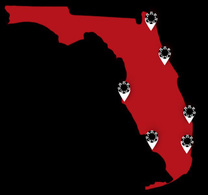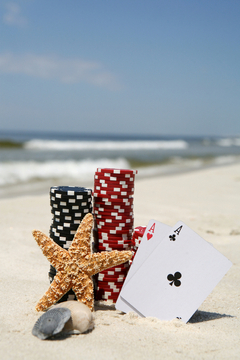New Poker Laws Finally Come to FloridaAfter Years of Obstacles, State Scraps Buy-in Restrictions |
|
|
 Finally.
Finally.
That’s what many poker players in Florida are inevitably saying as both the Florida Senate and the Florida House passed a new deal this week that will transform the poker landscape of the state. Once the governor signs the new compact and the U.S. Department of Interior approves the new legislation, Florida should finally have uncapped poker.
In some ways, Florida has been the laughingstock of live poker in the U.S. Due to a host of wacky restrictions, such as a $100 max buy-in at all cash games, casinos were running $5-$10 no-limit hold’em with a maximum buy-in of 10 big blinds.
But that’s all about to change.
The Florida House voted 74-39 on Monday to approve a new compact that will expand gambling in the state, just days after the Florida Senate approved the new deal by a 29-9 vote.
The new compact, which allows the Seminole tribe the exclusive right to operate Vegas-style slot machines and host blackjack and other table games at five of its seven casinos, lowers taxes for pari-mutels, and extends the hours of poker rooms throughout the state while scrapping the $100 restriction, is expected to raise $1 billion for the state and tribe over the next five years.
“This is a big contribution and a big commitment,” said Rep. Bill Galvano (R-Bradenton), one of the main proponents for the bill in the House. “It’s not estimated, it’s not, ‘Well, we might be able to achieve this.’ This is a guarantee.”
Until the U.S. Department of Interior, which oversees all agreements made between states and tribes, officially approves the compact, the exact details of the poker changes will not be set in stone. But it appears likely that Florida will finally be able to run a wide range of games without overbearing buy-in restrictions.
This has been a long time coming for Florida poker players.
 In 1989, Florida officially legalized “penny-ante” poker and stopped policing various home games and community centers, as long as the pot never exceeded $10. As poker players might imagine, there was still quite a demand for higher limits.
In 1989, Florida officially legalized “penny-ante” poker and stopped policing various home games and community centers, as long as the pot never exceeded $10. As poker players might imagine, there was still quite a demand for higher limits.
To increase traffic at the state-licensed pari-mutuel facilities, the legislature passed a law in 1996 allowing Jai Alai frontons, kennel clubs, and horse tracks to spread poker during races. The only problem was that they still had to abide by the $10 rule. At that time, players at a five-handed seven-card stud table would simply put in $2 each and all betting and raising would cease. The dealer simply dealt the rest of the hand face up.
For seven years, both players and cardrooms pressed the state to raise the betting limits, but all attempts failed. In 2003, after both sides had somewhat relented to various stipulations and conditions, Gov. Jeb Bush decided to pass the bill, and poker was allowed to grow, albeit with some new restrictions.
The new law stated that the pot could now surpass $10, but players could not bet more than $2 with any given action.This meant no-limit games were still nothing more than a fantasy, but at least the casinos could now spread rousing games of $1-$2 or $2-$2 limit stud, hold’em, or Omaha.
Despite the obvious drawbacks of a game many compared to playing bingo, poker exploded in popularity. Chris Moneymaker had just won the WSOP main event and cardrooms across the state were flooded with new players. Not only were existing rooms expanded to include more tables, but poker rooms began to sprout up and down the interstate, giving everyone from Miami to Pensacola the opportunity to play the game.
In 2007, the state finally buckled to increasing player demand and allowed the game to expand into its current state. No-limit hold’em was introduced to the casinos, and the players celebrated with their maximum of 50 big blinds for $1-$2. While the cardrooms saw the change as a victory, many players felt that the $100 buy-in rule still reinforced the notion that poker was a game of chance, not skill.
Now, it appears, skill will have a chance to rule the day. Finally.
Editor’s Note: Stephen A. Murphy and Julio Rodriguez contributed to this article.
